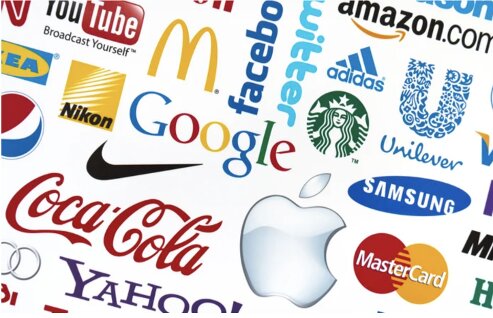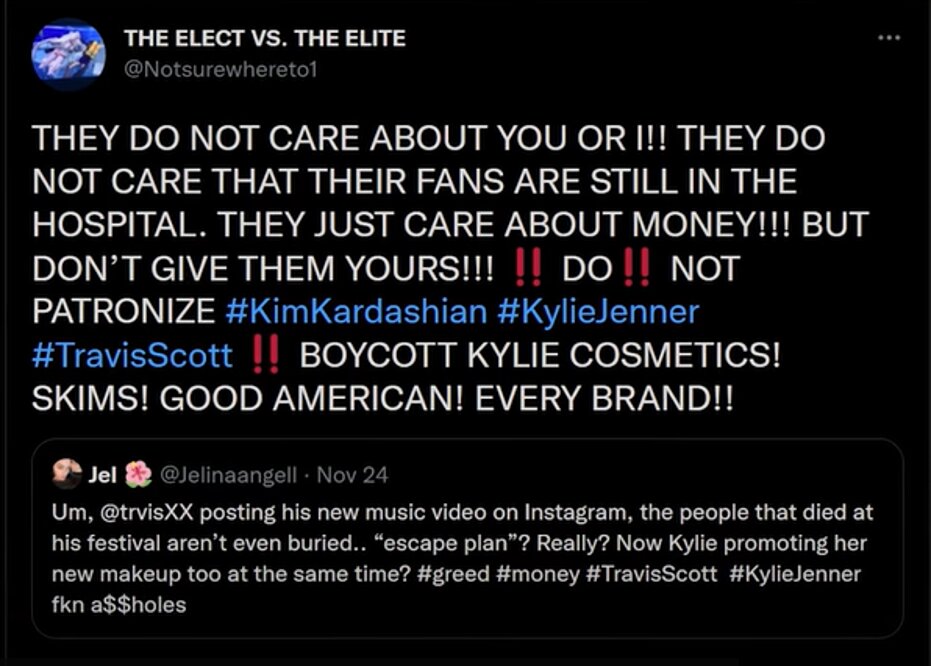
Dr. Susan Fournier, Dean of Boston University’s Questrom School of Business, provides insights on the benefits and risks of tying your brand to a celebrity.
March 2022
By Sarah Vancini
 It’s clear the power of combining celebrity brands and corporate brands can deliver. Case in point – McDonald’s Travis Scott Meal, the menu option that was undeniably profitable. Debuted in September 2020, the celebrity-endorsed offering consisted of a medium Sprite, a Quarter Pounder with bacon, and fries with barbecue sauce and brought in a whopping $20M in revenue.
It’s clear the power of combining celebrity brands and corporate brands can deliver. Case in point – McDonald’s Travis Scott Meal, the menu option that was undeniably profitable. Debuted in September 2020, the celebrity-endorsed offering consisted of a medium Sprite, a Quarter Pounder with bacon, and fries with barbecue sauce and brought in a whopping $20M in revenue.
Today celebrities and social media influencers have become an integral part of marketing for almost every brand. From Justin Bieber’s endorsement of OPI Nails to Kim Kardashian’s partnership with Charmin toilet paper, companies are collaborating with everyone from big-name celebrities to micro-influencers to get their products in the hands of everyday consumers.
In this article, we share a framework to think about brand values, voice, messaging, and the potential of celebrity brand partnership—benefits and risks. We interview Dr. Susan Fournier, a world-renowned marketing researcher and Dean of Boston University’s Questrom School of Business. She helps breakdown and analyze person-centered branding’s benefits and how to mitigate potential downside. Dr. Fournier shares her ideas about the future of celebrity branding and how to position your company for these future trends.
Dean Fournier explains that although endorsements are commonplace, the degree of association between brand and celebrity can vary significantly. Some celebrity CEOs like Rihanna (Fenty), Kylie Jenner (Kylie Cosmetics), and Martha Stewart (Martha Stewart Omni Media) are so enmeshed with their brand that it is hard to differentiate where the company starts and the celebrity ends. These brands and the personal brands of their celebrity endorsers/owners are essentially one and the same.
“There are other brands that opt for greater separation between the endorser and company,” says Dr. Fournier. These brands aren’t strictly tied to individuals but can be deeply connected to abstract ideals, values and even mascots. The human spokespersons for these brands are more interchangeable as the messaging focus is on brand ideals and associations. Think of Patagonia’s focus on simplicity, utility and outdoor activities; Geico’s gecko and Aflac’s duck mascots; or Nike’s tagline: “Just do it.”
Dean Fournier says there are significant risks and benefits to celebrity-driven branding. It’s important as a marketing leader to critically evaluate your value proposition, know your target audience and understand the financial dynamics to determine what kind of brand/celebrity relationship is the most strategic.
Completing this evaluation before striking partnerships is essential to making sure there is alignment and to identifying misalignment as quickly as possible. Having values alignment with consumer targets is a key part of this assessment. Afterall, more than 80% of consumers are loyal to brands who share their values1, making it critical that the core values of your brand align with your customers’ values and the celebrity endorser.
Brand and celebrity don’t necessarily need to express their values in exactly the same way, but the appeal across target groups needs to at least be complementary. Pluralytics’ language intelligence platform uses AI to help marketers and communicators understand values signaling in messaging. It is an innovative way to assess partnership potential and to monitor brand language consistency of across platforms to meet this values alignment imperative.
1 Fundera.
Oprah Winfrey bought a 10% stake in Weight Watchers for $43M in October of 2015. She not only financially endorsed the company with this investment, she but credited them with a sensible way to manage her weight. Within days after Oprah’s purchase, investors saw the value of their stock increase 92%. By the end of November 2015, the stock was worth $27.76 per share, a 279% increase from its low point of $6.79 before Winfrey’s announcement.
“Connecting your brand with a person is a strong revenue generator for several reasons, the most important being the way a real person can satiate authentic connection in the way a catch phrase, abstract value or mascot cannot. In the world of marketing and brands today, especially with the rise of influencers and social media, there exists a hunger for authentic connection. Brands are competing with one another on the basis of authenticity,” says Dean Fournier.
“There is a realness to person-centered brands impossible to achieve without a central figure. With a consistent spokesperson, customers experience an intimate relationship with a person. They can interact with and explore brand loyalty in an authentic, seemingly unscripted way,” continues Dr. Fournier. The relationship between person and consumer is further leveraged today using social media. Consumers not only get to listen and observe the central figure in an unfiltered way, but also get to interact through direct messages, comments, likes and AMA’s.
“Just as personal endorsements can enhance brand value, they also can decrease it if the right safeguards are not in place,” says Fournier about the potential risks posed by deeply associating a person with a brand. There are numerous recent examples of how celebrity owners/endorsers have negatively impacted brand perception.
Kylie Jenner’s Kylie Cosmetics faced intense backlash after the CEO attended her boyfriend Travis Scott’s Astroworld concert where 10 attendees died. #Boycottkyliecosmetics trended, ending in hundreds of thousands of dollars lost for the brand.
While Kylie Cosmetics had no formal association with the incident, the CEO and face of the company, Kylie Jenner, was involved and therefore it backfired on the brand.
 Image source: https://www.youtube.com/watch?v=CmGGthfVCrU
Image source: https://www.youtube.com/watch?v=CmGGthfVCrU
Dean Fournier cautions that the immediate buzz influencers bring to a campaign can come with a cost, and that cost is the increased risk of being connected to a fallible human.
“It’s exciting to think about developing a person-centered brand and forging campaigns based on a real human. But the closer you tie your brand to a person, the more public relations risk you face,” cautions Fournier.
Person-centered brands are also inherently more difficult to manage than traditional brands.
“Once a person is integrated into a brand you create a completely different entity. People, whether surrounded by a large brand or not, live and breathe and make decisions autonomously. It is impossible to fully control someone no matter how many resources you have,” adds Fournier.
People are unpredictable. People make mistakes. They change in unexpected ways. They don’t always act “on-brand.”
Dean Fournier explains that with looser ties between brand and person, there is less risk for public relations difficulties. Teams of people at Kellogg’s may spend months agonizing over what Tony the Tiger should say in their newest commercial. They weigh the implications of each word and expertly craft his phrasing.
“With traditional brands, your team gets to pull all the strings,” says Fournier. A marketing team can come together and decide on exactly what messaging will be released and how the brand will respond thoughtfully to issues that arise in the market.
With person-centered marketing and social media, the central figure of your company can talk to all your consumers in an instant. Your marketing team can’t control and weigh in on everything someone representing your brand does. A bad PR move for the person surrounding your brand is a bad PR move for your company.
“People change much more throughout their lives than brands do,” states Fournier. For example, Paris Hilton Entertainment is a multi-billion-dollar company consisting of 45 branded stores, 19 product lines and 27 fragrances, which have surpassed over $4 billion in revenue. The Paris Hilton brand was built on an image of the CEO as a ditzy, spoiled party girl. This ideal was perfect for a young woman in her 20s, but as the mogul approaches 40, she is often asked how her brand will grow with her. Will she be able to uphold her party girl image in her 40s and 50s?
When the face of your company begins their relationship with your brand, marketers need to anticipate that they may grow away from the ideals of the company. What happens when they start exhibiting these new ideals and their core customer base is not in support of them? Social listening tools are critical for ongoing assessment to spot these changes as well as new tools such as AI-powered language intelligence from Pluralytics which can evaluate messaging for brand alignment before content is released.
Given the inherent risk of people, are person-centered brands or traditional brands better investments? Dr. Fournier notes we know that when a brand connects with a celebrity successfully:
Even given these benefits, it is important to assess and understand the risks.
Today many brands are associated in some way with a person. Whether that’s a single campaign brand ambassador or a full-time CEO who is the face of the company, firms tie themselves to individuals in one way or another to varying extents.
It is this balance between brand ideals and the people associated with the brand that differentiates traditional from person/celebrity-centered brands. In fact, person-centered brands are less an all-or-nothing phenomenon and more of a spectrum and continuum. The deeper a person-brand integration, the more possible benefit and increased risk.
In the future, Dean Fournier sees no waning of Americans’ appetite for celebrity CEOs and people with branded products. Because of this, the development of thorough risk management practices will be key for company management. Success lies in expanding your view of risk, anticipating the possible downsides, and having a plan to manage any possible negative incidents. Today, many marketers are not thinking hard enough about the downside of person-centered brands and how keep the brand intact if something goes wrong.
In the end, the answer lies in preparation and successful ongoing management. The key is rigorous evaluation before striking partnerships and afterwards, dedicated monitoring and collaborating to make sure that brand values and voice alignment across celebrity and brand is cultivated and measured consistently.
Bio: Susan Fournier is Allen Questrom Professor and Dean of the Questrom School of Business at Boston University and Professor of Marketing. She is the school’s first woman dean and its first academic dean in over 40 years. With over 29,000 Google Scholar citations, Fournier ranks among the top 2% of researchers across all disciplines worldwide. She has received five major research awards for her published works. Susan’s transformational paper “Consumers and their Brands” has been cited 11,451 times. In 2021 she was awarded the Distinguished Scientific Contribution Award in Consumer Psychology, one of only 23 scholars holding this title. To learn more about person-centered brands and AI check out Insights at Questrom a new digital hub for marketing content, or Boston University’s Future of Work website. If you are interested in advancing your career by focusing on person-centered brands, BU has a specialized MBA program in Digital Business.
About the author: Sarah Vancini is a writer and marketing thought leader who helps companies leverage neuroscience in their business processes. Ms. Vancini has an MBA from Boston University’s Questrom School of Business with a specialization in Health Sector Management and Entrepreneurship, and she is the co-author of five white papers including “Artificial Intelligence-Integrated Operating Rooms.” She is co-founder of Stories with Substance which creates marketing materials with a focus on product visualization to drive conversion.
Build meaningful connections anytime, anywhere. That’s the power of Pluralytics.
Start a Free 30 day trial